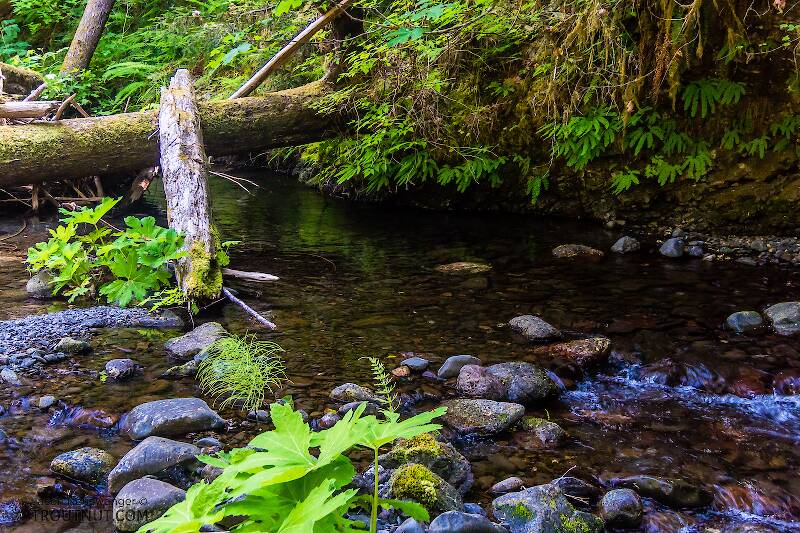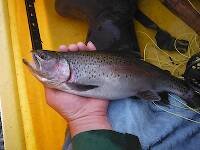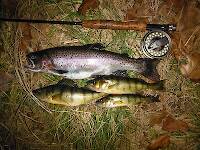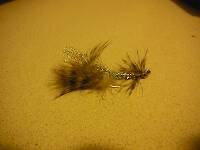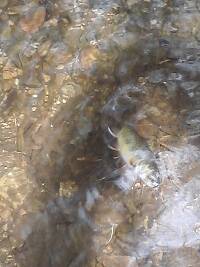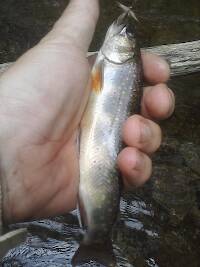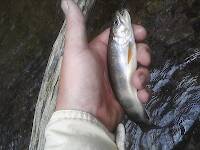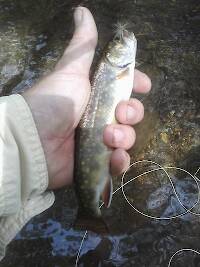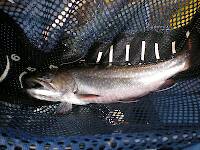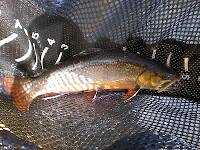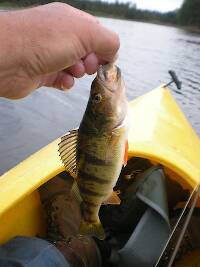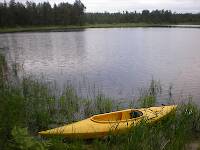
Blue-winged Olives
Baetis
Tiny Baetis mayflies are perhaps the most commonly encountered and imitated by anglers on all American trout streams due to their great abundance, widespread distribution, and trout-friendly emergence habits.
Featured on the forum

This one was surprisingly straightforward to identify. The lack of a sclerite at the base of the lateral hump narrows the field quite a bit, and the other options followed fairly obvious characteristics to Clostoeca, which only has one species, Clostoeca disjuncta.

Troutnut is a project started in 2003 by salmonid ecologist Jason "Troutnut" Neuswanger to help anglers and
fly tyers unabashedly embrace the entomological side of the sport. Learn more about Troutnut or
support the project for an enhanced experience here.
Jmd123 on Nov 3, 2015November 3rd, 2015, 6:12 pm EST
So I posted a story yesterday about my latest trout-fishing kayak trip to a favorite local lake, one of two I visit and this one primarily in the fall because it is still open (my other favorite closes at the end of September). Since I moved up here almost five years ago, I have had far more opportunity for stillwater trout fishing than ever before. I have had a fair amount of success but compared to stream fishing it is still pretty much a mystery to me.
Do trout relate to structure, like logs or weed beds? Do they just cruise around, or do they establish territories that they circle looking for prey like rising pupae, minnows, etc.? If you see a trout rise in a pond or lake, is it going to stay in the vicinity or did it rise on the way to somewhere else...?? I have had luck aiming for pond rises and getting subsequent strikes, especially at [REDACTED] Pond for brookies, but not so much at Reid Lake.
These are two very different spots - one is like a giant man-made beaver pond with a spring creek feeding it and doesn't get much over your head, and the other is a 13-acre kettle hole with no inlet or outlet and a max. depth of 38 feet. The lake has finally been throwing decent sized rainbows at me, and they have been going for streamers that imitate baitfish - this lake is loaded with minnows which also feed the ample perch population. The lake also receives 1200-1500 6-7" rainbows yearly, and it has very dense weed growth around the edges and even some at depth.
The pond has ample insect hatches with a variety of caddis and mayflies, and some grasshoppers around the edges as well as the occasional flying ant fall. It is great dry fly fishing and I've taken the biggest brookies I ever caught from there. But it's closed 7 months out of the year (probably a damned good thing) and the lake is open all year, so I always fish the lake early and late in the year and I am not as familiar with its hatches. Mosquitoes are horrible there in the summer - and I don't even wanna think about deer flies - so I avoid it and mostly hit the pond and the streams then.
And how about trout eating snails? Anyone else ever run into this? I mean it sounded like a handful of gravel fell on my deck when I opened his stomach. Was he plucking them off the weeds? Why did he eat so many of them?? Do I tie weighted clumps of dark brown or olive deer hair for this lake? He couldn't have gotten that big on SNAILS, could he?
I know there are references out there on stillwater trout fishing, so if anyone has any particular recommends I would appreciate them. This is a very fun and different aspect of flyfishing that I hadn't done much before and I know the lake has the potential to grow some big fish.
Jonathon
Do trout relate to structure, like logs or weed beds? Do they just cruise around, or do they establish territories that they circle looking for prey like rising pupae, minnows, etc.? If you see a trout rise in a pond or lake, is it going to stay in the vicinity or did it rise on the way to somewhere else...?? I have had luck aiming for pond rises and getting subsequent strikes, especially at [REDACTED] Pond for brookies, but not so much at Reid Lake.
These are two very different spots - one is like a giant man-made beaver pond with a spring creek feeding it and doesn't get much over your head, and the other is a 13-acre kettle hole with no inlet or outlet and a max. depth of 38 feet. The lake has finally been throwing decent sized rainbows at me, and they have been going for streamers that imitate baitfish - this lake is loaded with minnows which also feed the ample perch population. The lake also receives 1200-1500 6-7" rainbows yearly, and it has very dense weed growth around the edges and even some at depth.
The pond has ample insect hatches with a variety of caddis and mayflies, and some grasshoppers around the edges as well as the occasional flying ant fall. It is great dry fly fishing and I've taken the biggest brookies I ever caught from there. But it's closed 7 months out of the year (probably a damned good thing) and the lake is open all year, so I always fish the lake early and late in the year and I am not as familiar with its hatches. Mosquitoes are horrible there in the summer - and I don't even wanna think about deer flies - so I avoid it and mostly hit the pond and the streams then.
And how about trout eating snails? Anyone else ever run into this? I mean it sounded like a handful of gravel fell on my deck when I opened his stomach. Was he plucking them off the weeds? Why did he eat so many of them?? Do I tie weighted clumps of dark brown or olive deer hair for this lake? He couldn't have gotten that big on SNAILS, could he?
I know there are references out there on stillwater trout fishing, so if anyone has any particular recommends I would appreciate them. This is a very fun and different aspect of flyfishing that I hadn't done much before and I know the lake has the potential to grow some big fish.
Jonathon
No matter how big the one you just caught is, there's always a bigger one out there somewhere...
TimCat on Nov 3, 2015November 3rd, 2015, 8:24 pm EST
I imagine it would be pretty darn hard to imitate a snail in still waters since they don't really move around much. Although, they would float downstream in rivers, the waters you are describing don't seem to be that way. I'm certainly not an expert though.
Out of curiosity, along with those snails, did you notice any moss or weeds in the stomach too? I've cut open bluegill with a lot of snails in them, but they were accompanied with a lot of what looked like sand and clay (which could just be some other half-digested stuff).
Out of curiosity, along with those snails, did you notice any moss or weeds in the stomach too? I've cut open bluegill with a lot of snails in them, but they were accompanied with a lot of what looked like sand and clay (which could just be some other half-digested stuff).
"If I'm not going to catch anything, then I 'd rather not catch anything on flies" - Bob Lawless
Quick Reply
Related Discussions
Topic
Replies
Last Reply
9
Nov 3, 2015
by Oldredbarn
by Oldredbarn
Re: No fish but some beautiful scenery and a big scary (true) bug!
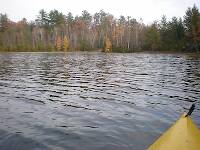
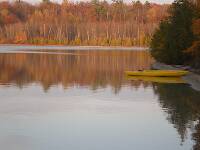
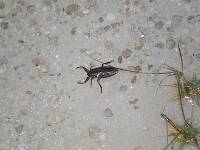
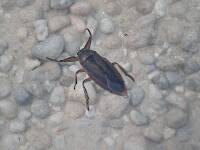
In the Photography Board by Jmd123




In the Photography Board by Jmd123
3
Nov 2, 2011
by Entoman
by Entoman
3
Jun 12, 2011
by Motrout
by Motrout

